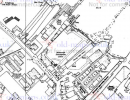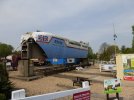Adlington
Member
- Joined
- 3 Oct 2016
- Messages
- 1,040
Somewhat less successful than hovercraft...
http://www.bbc.com/news/av/uk-engla...museum-in-bid-to-preserve-1960s-uk-hovertrainA museum is hoping to raise money to preserve a hovertrain that threatened to revolutionise travel in the 1960s.
The monorail transport was an elevated, high speed hover train that was tested on a track on the Cambridgeshire Fens before being scrapped by the government.
The Railworld museum in Peterborough museum is storing the last known prototype and hopes to raise fund to put it under cover.


